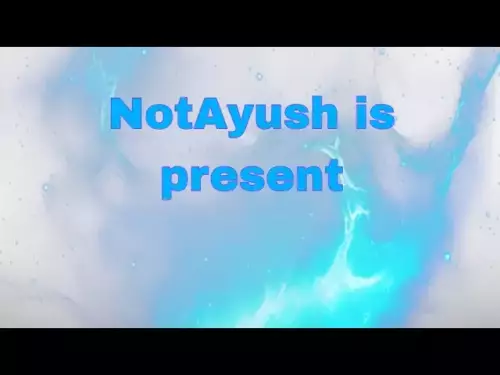 |
|
 |
|
 |
|
 |
|
 |
|
 |
|
 |
|
 |
|
 |
|
 |
|
 |
|
 |
|
 |
|
 |
|
 |
|
加密货币新闻
Ephemeral Anchors: An Amazing Simplification That Will Benefit Any Second Layer Protocol
2025/01/07 03:01

I really thought that we had seen the bottom in terms of Bitcoiners making irrational and ridiculous arguments against improvements to Bitcoin, in order to paint themselves as some kind of righteous underdog fighting against corruption and incompetence from the inside.
Boy was I wrong.
So, some things to explain first. With Lightning channels, you have to decide your fee-rate for a unilateral close transaction ahead of time. Because the actual UTXO is a multisig, both parties to the channel have to sign the transactions either side uses to close the channel unilaterally ahead of time. The entire security of Lightning is based on having these. If you ever needed to use one, say because your counterparty is being non-cooperative, you can’t exactly count on them to resign one at a higher fee-rate if you needed it.
This led to problems during unilateral fee closures. If fees were high and came down since you opened your channel, you pay money you didn’t need to. If fees were low and went up, you can’t guarantee that your channel closes in a timely manner. You can’t Replace-By-Fee(RBF) because your counterparty needs to sign, and you can’t use Child-Pays-For-Parent(CPFP) because all of your outputs are timelocked, so nothing spending them will be valid until after the first transaction actually confirms and multiple blocks pass.
Because of this, anchor outputs were created. They were special outputs that exist without timelocks for the sole purpose of being able to spend in a child transaction to fee-bump the Lightning close transaction. These added more capital inefficiency though, requiring a non-negligible amount of satoshis be used to create these outputs.
Enter ephemeral anchors, building on the v3 transaction relay and package relay (relaying transactions in the mempool as groups). The idea is to have a 0 value output spendable with OP_TRUE(meaning anyone can spend it). Transactions that have a fee-rate of 0, and include an ephemeral anchor, will be relayed in the mempool as long as there is a child transaction spending the ephemeral anchor output with an appropriate fee-rate.
This allows Lightning channels to sign unilateral closure transactions with no fees, and anyone who needs to use them can simply spend the ephemeral anchor output to set whatever fee-rate is required at the time. This greatly simplifies Lightning closure transactions, and removes capital inefficiencies of existing anchor outputs. An added bonus is that anyone can fee bump a transaction with an ephemeral anchor, not just the channel (or other contract) owners.
The ephemeral anchor never even creates the 0 value UTXO in the UTXO set, because it will only be relayed along with a transaction that instantly spends it in the same block.
So why is this a problem? Or an attack? I have no clue, it’s an amazing simplification that essentially any second layer protocol, or contract built on Bitcoin in general, that uses pre-signed transactions will benefit greatly from. It causes no bloat of the UTXO set, because as is in the name, the outputs used are ephemeral. They aren’t actually permanently created.
The only arguments I’ve seen are “spam!” Or “Core developers are removing the dust limit!” (A restriction on the minimum value transaction outputs must have to be relayed, and they aren’t removing it for anything but ephemeral anchors, which must be immediately spent by a child to be relayed).
I think we are at a point where we have to seriously consider when it is time to dismiss criticism or complaints surrounding technical subject matter in this space. Or where legitimate criticisms stop being that, and become irrational and illogical crusades against or for personalities instead of reasoned criticism. Because this backlash against ephemeral anchors is incontrovertibly the latter.
All rational criticism should be welcomed in an open source protocol like Bitcoin, but it's time to stop humoring irrational tribalism with no logical basis as if it is equivalent to legitimate criticism. It’s not, it’s purely a waste of time and a Denial of Service attack against the process of improving Bitcoin.
免责声明:info@kdj.com
所提供的信息并非交易建议。根据本文提供的信息进行的任何投资,kdj.com不承担任何责任。加密货币具有高波动性,强烈建议您深入研究后,谨慎投资!
如您认为本网站上使用的内容侵犯了您的版权,请立即联系我们(info@kdj.com),我们将及时删除。
-

-

- 加密投资组合管理:骑鲸鱼并找到宝石
- 2025-09-28 22:00:42
- 通过有关多元化,风险和投机游戏的见解,导航加密货币组合管理。了解如何管理市场波动,并可能将小型投资变成重大胜利。
-

- BTC价格随着比特币ETF所见流入,以太坊ETF的流血:有什么问题?
- 2025-09-28 22:00:28
- 比特币ETF恢复了时尚,但是以太坊ETF?不多。另外,厚脸皮的新模因硬币正在浪潮。让我们分解。
-

-

-

-

-

- 比特币价格眼睛逆转?分析师称重
- 2025-09-28 22:00:00
- 比特币的价格处于关键时刻。一位分析师建议,如果关键支持保持不变,则可能会有反向路线,这引发了新的集会希望。
-

- XRP的突破即将到来:激增?
- 2025-09-28 21:56:00
- XRP正在盘绕以进行潜在的突破。积累很高,销售压力很低,分析师正在关注巨大的激增。 XRP准备弹出了吗?























































